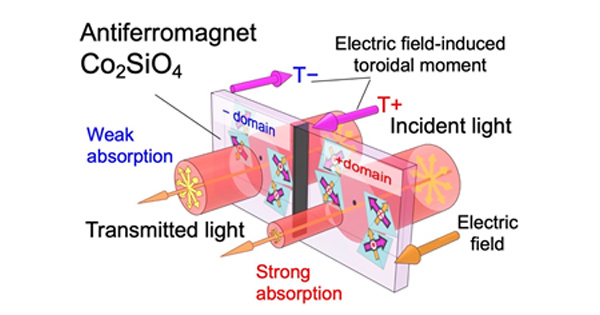Share this
Authors
H. Takagi, R. Takagi, S. Minami, T. Nomoto, K. Ohishi, M.-T. Suzuki, Y. Yanagi, M. Hirayama, N. D. Khanh, K. Karube, H. Saito, D. Hashizume, R. Kiyanagi, Y. Tokura, R. Arita, T. Nakajima, S. Seki
Abstract
In ferromagnets, an electric current generally induces a transverse Hall voltage in proportion to the internal magnetization. This effect is frequently used for the electrical readout of the spin-↑ and spin-↓ states. Although these properties are usually not expected in antiferromagnets, recent theoretical studies predicted that a non-coplanar antiferromagnetic order with finite scalar spin chirality—meaning a solid angle spanned by neighbouring spins—can induce a large spontaneous Hall effect even without a net magnetization or external magnetic field. This phenomenon—the spontaneous topological Hall effect—can potentially be used for the efficient electrical readout of antiferromagnetic states, but it has not been experimentally verified due to a lack of appropriate materials hosting such magnetism. Here we report the discovery of an all-in–all-out-type non-coplanar antiferromagnetic order in triangular lattice compounds CoTa3S6 and CoNb3S6. These compounds are reported to host unconventionally large spontaneous Hall effects despite their vanishingly small net magnetization, and our analysis reveals that it can be explained in terms of the topological Hall effect that originates from the fictitious magnetic field associated with scalar spin chirality. These results indicate that the scalar spin chirality mechanism offers a promising route to the realization of a giant spontaneous Hall response even in compensated antiferromagnets, and highlight intercalated van der Waals magnets as a promising quasi-two-dimensional material platform to enable various non-trivial ways of electrical reading and the possible writing of non-coplanar antiferromagnetic domains.
Nature Physic: https://www.nature.com/articles/s41567-023-02017-3
These Related Stories

